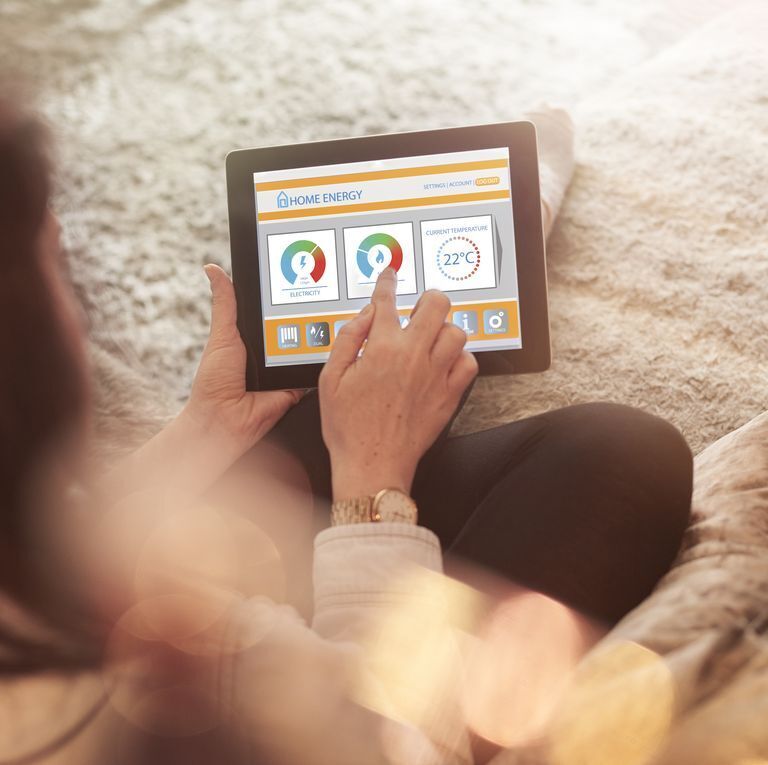
$50bn SDG-targeted investment proposals at SDG Investment Fair
Over 100 SDG-aligned projects with a total investment scope of $ 50 billion have been presented during the ...

There are many things we can do to make our homes more sustainable. From installing a smart meter to investing in energy efficient light bulbs, these easy fixes can save you money, help the planet, and lower your carbon footprint too.
According to new research from energy and solutions provider, E.ON, 49 per cent of Brits have become more concerned with having sustainable solutions since spending more time at home, with a further 38 per cent explaining they want to make their home more sustainable.
Meanwhile, another study recently discovered that one third of households have become greener during the coronavirus pandemic.
To help households make a start, E.ON has teamed up with architectural designer, Charlie Luxton, to share planet-friendly home tips. While some improvements can be done immediately, others will take longer and require more investment.
‘LED bulbs are available for a wide range of light fittings and they no longer give a cold harsh light,’ says Charlie. ‘Every one of your bulbs should be replaced with an LED bulb (unless your lighting fixture says you shouldn’t) as they are more energy efficient and help you save on your energy bills, but be sure to turn off the lights when not in use.’
This simple swap can make a huge difference to both your energy bills and the planet. Why not give it a go?
Fresh water is one of our most precious natural resources, so it’s important to monitor how much you’re wasting. If you have the outdoor space, consider installing a water butt. If you wash up regularly, try saving the leftover water for plants.
Charlie suggests another swap: ‘Think about changing your shower-head to a low flow aerating one. These add air into the water flow and can significantly reduce the amount of water used in a shower without impacting on your enjoyment. To also help reduce water waste at home, change your loo cistern to a low flush version or if you have an older loo you can retrofit a dual flush.’
Save energy at home by installing a smart meter. These will show you how much energy your household is using in pounds and pence, making it easier to track what you’re using. ‘This is a great way to track your energy so you can adapt and become more efficient,’ says Charlie. ‘Be warned – watching the little screen can become addictive!’
Insulating your home can help to significantly reduce heat loss and lower your heating bills. If you’re able to, consider insulating your walls, as this is the biggest area of heat loss.
Charlie says: ‘By insulating externally or internally – either of which may have a slight impact on the size of some rooms – you will transform the warmth and comfort of your home.’
While it’s a more costly change to make, triple-glazed windows (which are three panes of glass within a sealed frame) are great to consider. ‘These will help to insulate your home, be draught-free and will feature noise reduction qualities,’ adds Charlie.
Solar panels, which absorb the sun’s energy to power your home, have low maintenance costs, help to make your home more sustainable, and may even attract buyers in the future. ‘They are especially useful if you are planning on investing in an electric vehicle or home battery storage,’ says Charlie.
‘If your boiler is over 12 years old, it is likely time to consider a replacement. New boilers are much more energy efficient, meaning there is less waste coming from your home – benefiting the planet and your wallet,’ Charlie explains.
It’s important to regularly seal up any cracks and holes in your home, as this can cause heat loss. Not sure where to look? Check key areas such as windows, doors, floors, roofs and walls.
Charlie explains what you could consider to go a step further: ‘To create an even healthier home, you could consider installing a Mechanical Ventilation Heat Recovery (MVHR) to clean pre-warmed air to your living spaces and extract any stale or damp air.’
Over 100 SDG-aligned projects with a total investment scope of $ 50 billion have been presented during the ...
Global electric car sales are set to hit around 17 million by the end of ...
Ericsson Canada marked the Earth Day by joining the Environment and Climate Change Canada’s (ECCC) Net-Zero ...


اترك تعليقا